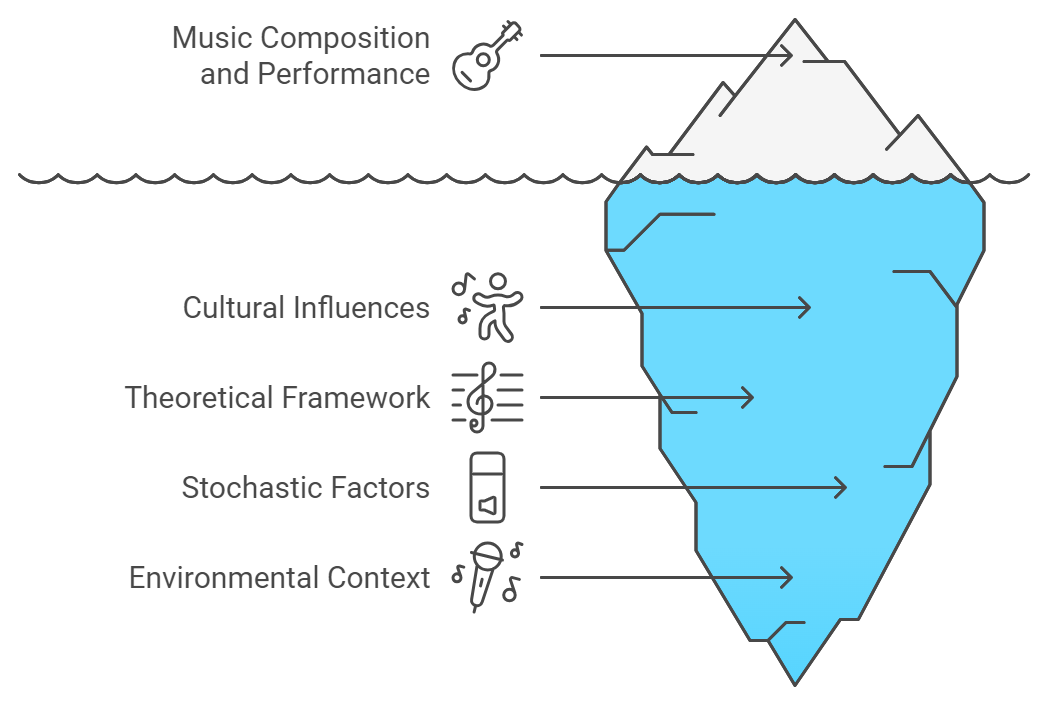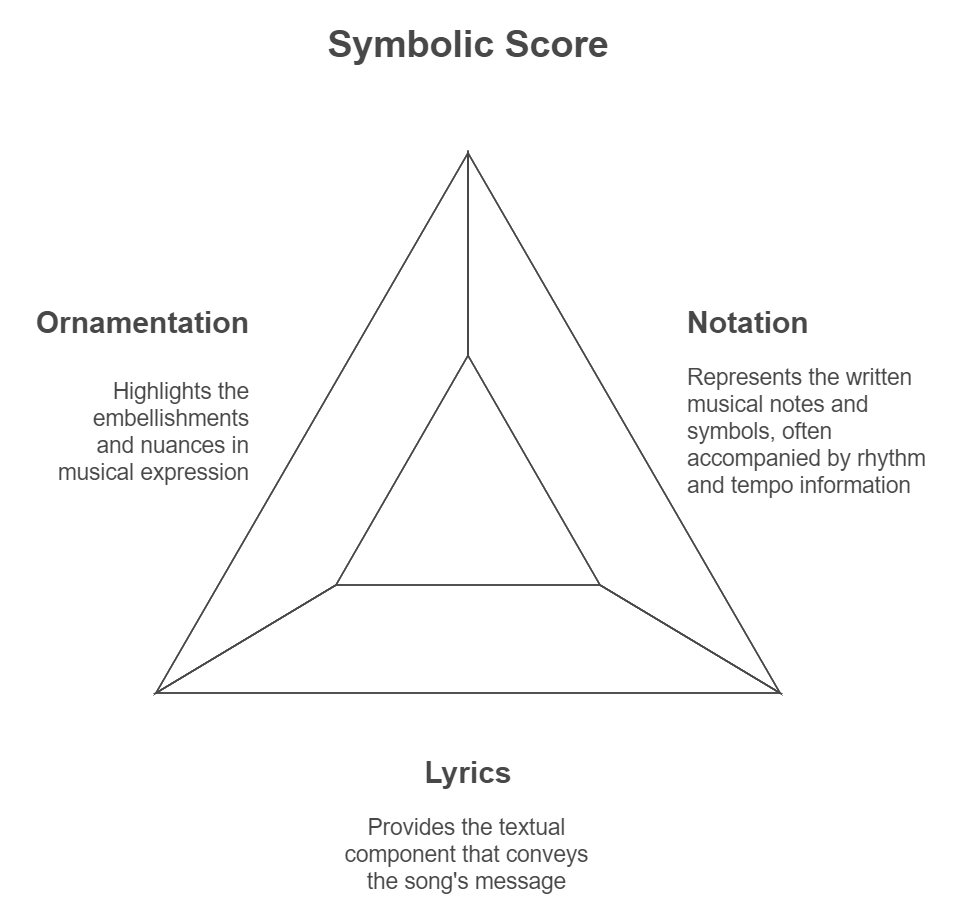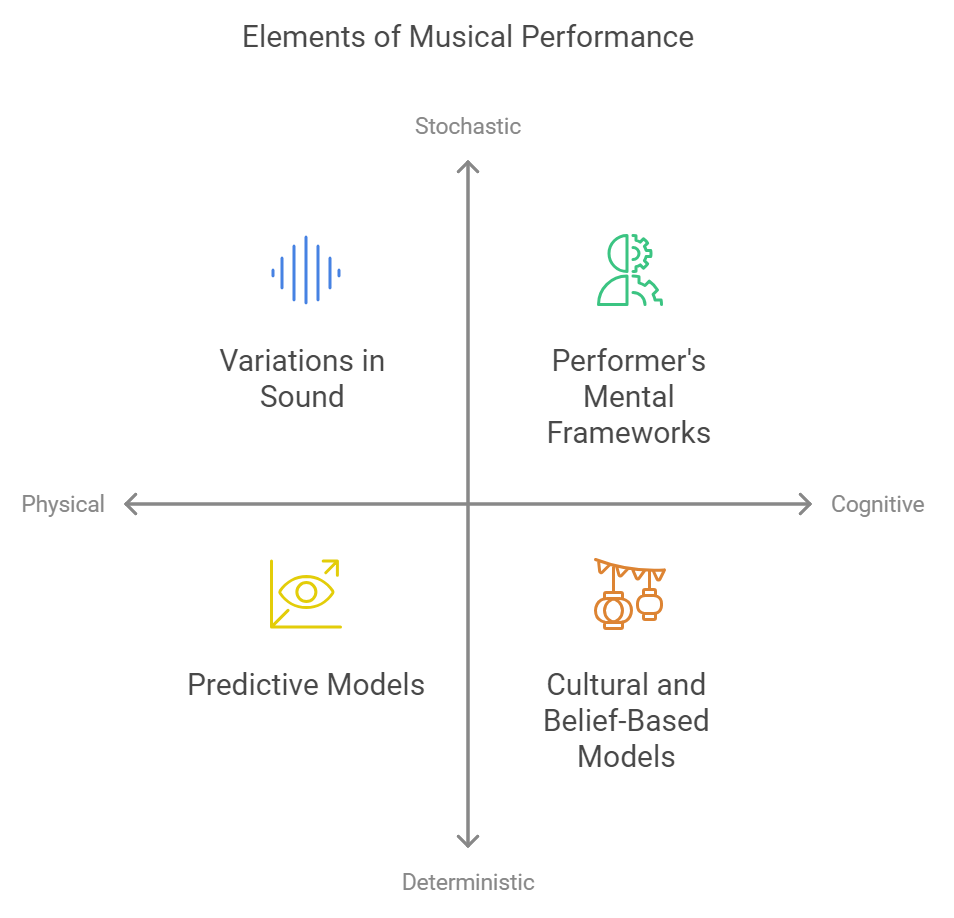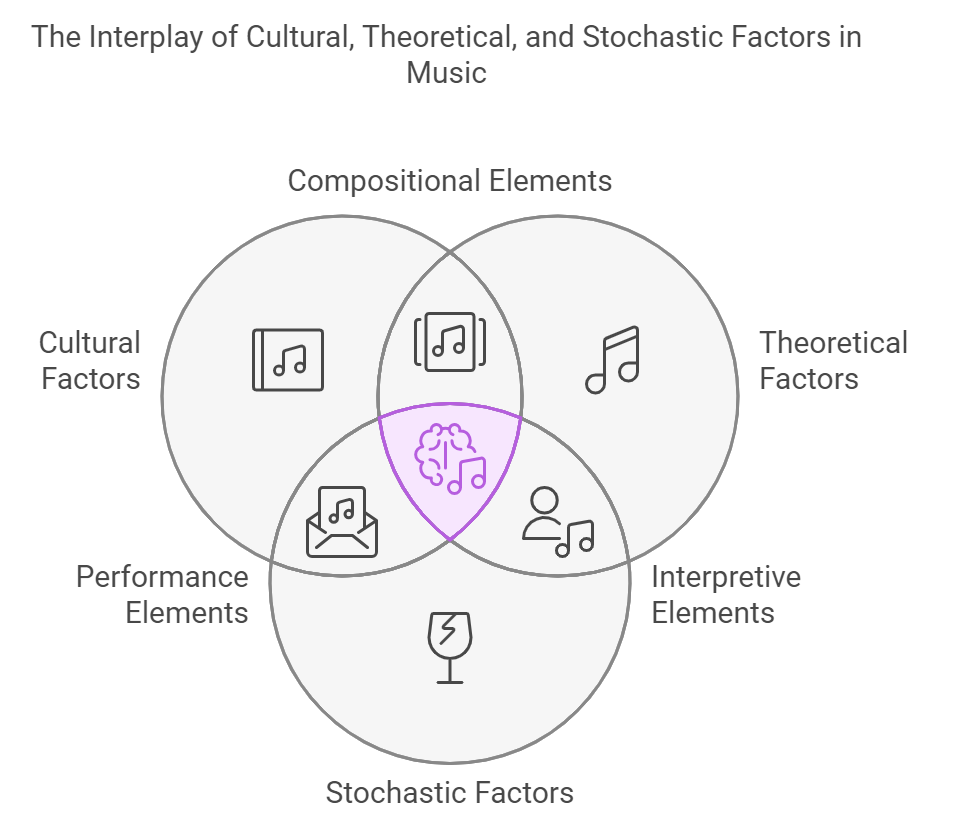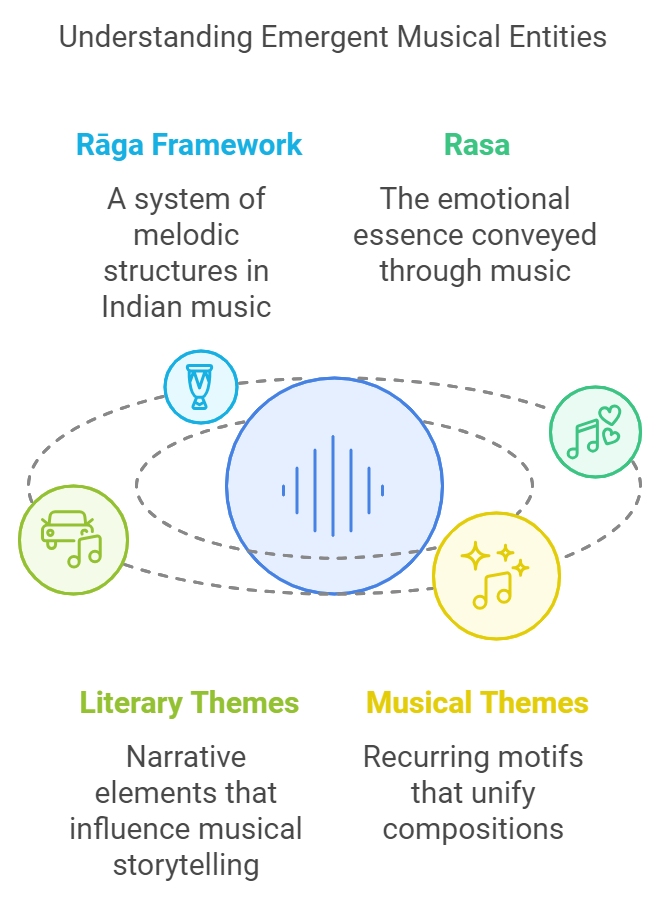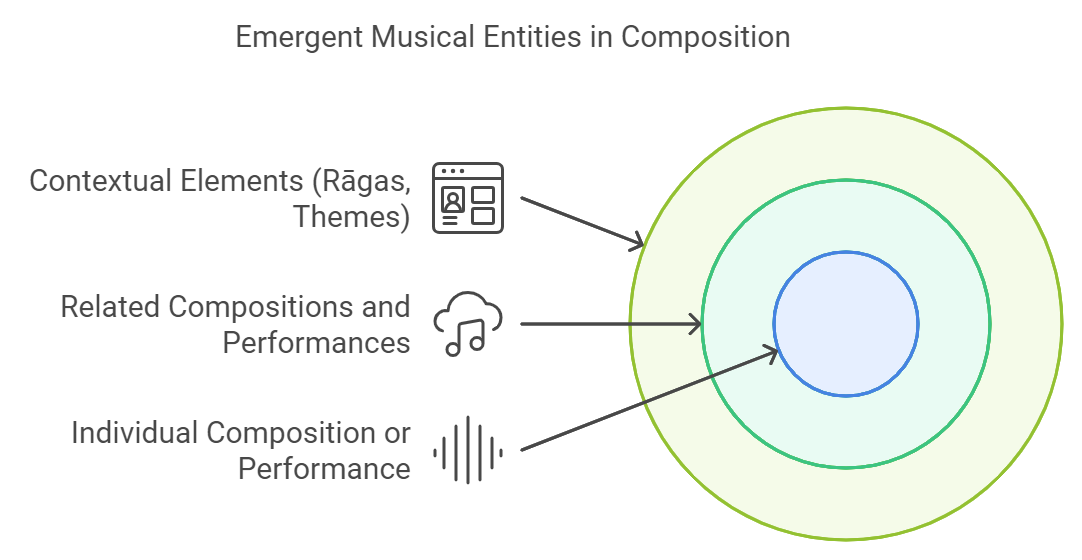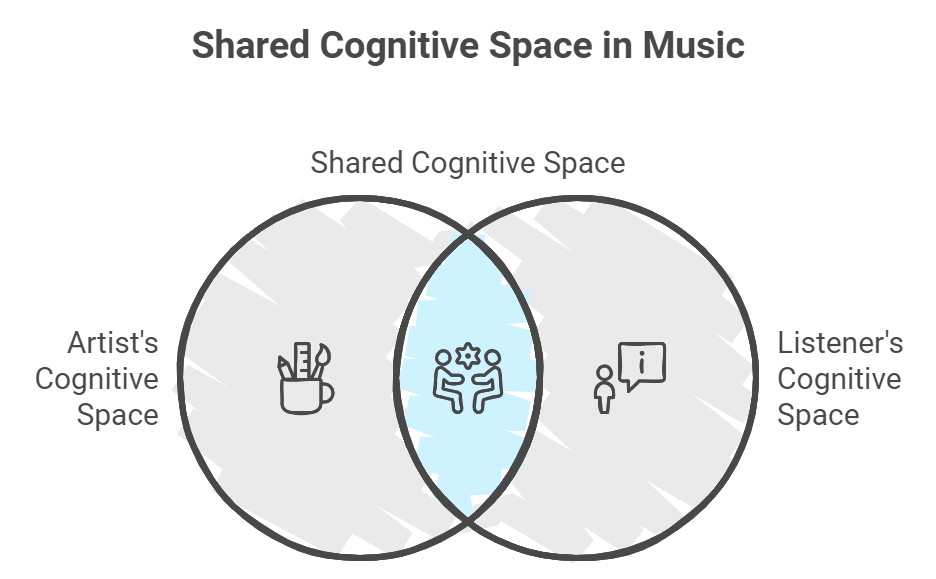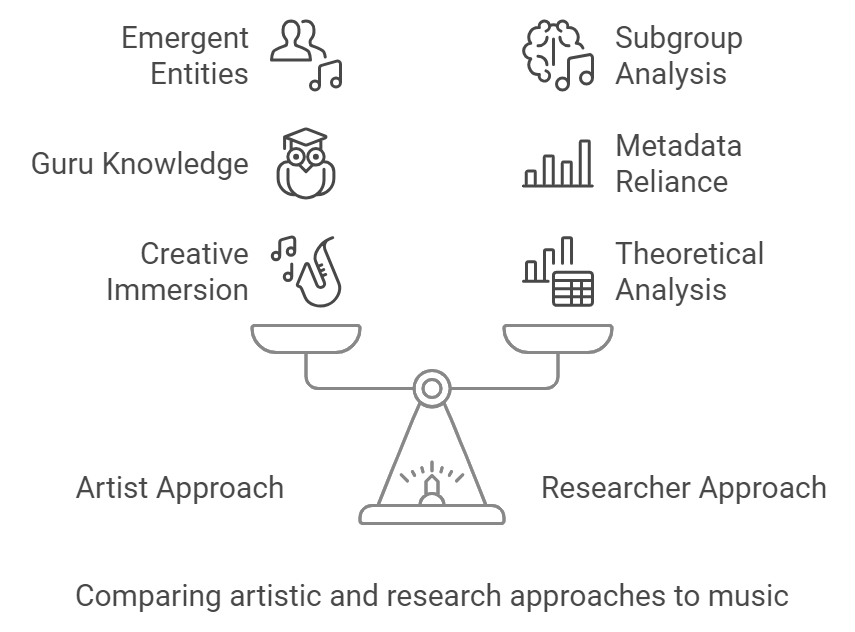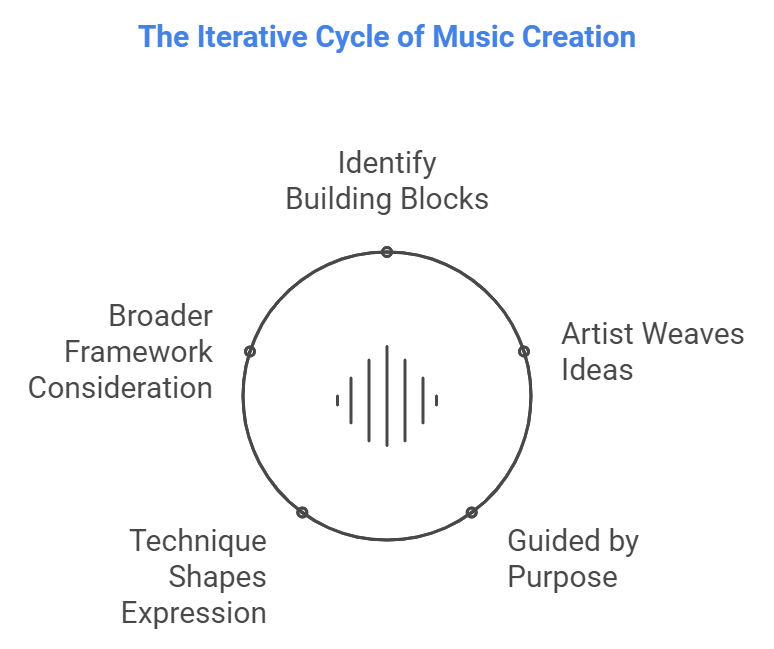On symbolic scores, composition, and performance
Understanding the Dynamics of Composition and Performance in Music: Towards a Generative Music Framework
This article explores the various elements that contribute to a musical piece, and the intricate relationship between composition and performance in music. By examining how these elements interact, we can gain insights into the processes of learning, performing, and interpreting music. It offers a new way to understand music as a process rather than just a product, which could lead to practical applications, particularly in performance analysis, music pedagogy, and AI music generation. The discussion encompasses symbolic scores, stochastic elements, cultural influences, and the roles of both composers and performers, ultimately leading to a deeper understanding of emergent musical entities and the shared cognitive space between artists and listeners.
The Symbolic Score
A symbolic score represents only the fundamental information about a composition or a performance. This information is what musicians consciously consider while learning or presenting a piece, encompassing traditional notation (encoding melody, rhythm, sometimes tempo) and lyrics, along with rudimentary details on gamaka (especially grace notes). A musician may encounter a symbolic score as a composition (pre-performance) or as a transcription of a performance (post-performance). A composition is an abstract entity that becomes fully realised during a performance.
The Role of Stochastic Elements
The rendered performance combines the composition with stochastic elements, which may have mechanistic explanations. These stochastic elements can include:
Physical Modelling: Variations in the sound produced by instruments and vocal cords, which manifest during rendering.
Cognitive Models: The performer's mental frameworks that influence the performance, reflecting both predictively and stochastic-variably. These models may be music-theoretical (e.g., concepts of śruti, gamaka, and rāga) or culturally and belief-based, impacting the emotional content of the performance. These may also be related to technique, for example, strumming/plucking patterns or ākār with heavy gamak.
Contributing Elements
Three major sets of elements contribute to the model of composition and performance:
Cultural Elements: These encompass values, beliefs, stories, perceived history, and shared or individual myths that shape a musician's connection with the art. They account for aesthetic values that drive musical styles.
Music Theoretical Elements: This includes the rules and definitions of a music theory system, along with the implicit values contained within it. For instance, a theory may prioritize certain pitch classes while downplaying dynamic range or polyphony, reflecting cultural underpinnings.
Stochastic Elements: These involve the mechanical aspects of rendering music through instruments or vocals, including timbre and technical factors such as microphones, instrument pickups, amplifiers, and speakers. Environmental factors, including space and ambience (including non-acoustic features of the space), also play a role in the performance.
Emergent Musical Entities
A set of related compositions and performances can give rise to emergent musical entities, such as the rāga framework, rasa, and literary and musical themes. These entities facilitate the study of compositions as a whole and help interpret individual pieces within context. Relatedness among compositions can be inferred based on these emergent contexts, such as shared rāgas or similar themes. Even more abstract entities such as families of rāgas and other hierarchies can be inferred from such ideas of relatedness.
The Composition Process
The composition, often represented as a symbolic score, integrates inputs from all these sets of elements, along with established emergent musical entities. While a composition typically has minimal explicit inputs from stochastic elements, these can influence the composer's choices, such as preferred vocal styles or instruments and choice of phrases and gamakas.
A composition ideally serves a purpose, whether storytelling, evoking specific emotions, or exploring music abstractly. Artistic choices and processes leading to a composition's creation are influenced by this purpose, ideally reflected in the emergent musical properties.
The Role of the Artist
The composer may be the same as or different from the performer. The artist engages with the composition, often learning it within the context of emergent musical entities, cultural elements, and music theoretical frameworks. This engagement involves practice, typically guided by a guru, and employs both focused and diffused modes of thought, blending logical and creative approaches.
Stochastic elements may also influence the learning process, either as established influences affecting the genre or as rāga-specific factors. Consequently, interpretation of a score may vary across genres, schools, or instruments.
Shared Cognitive Space
The learnt composition remains abstract in the artist’s mind and materialises during a performance, which involves both auditory and non-auditory elements. The delivery and perception depend on shared cultural and theoretical knowledge between artist and listener. Stochastic elements, especially in improvisation, bring variability to each performance, even when repeated by the same artist.
The artist’s and listener’s ‘cognitive space’—their collective knowledge, values, and beliefs—shapes the experience, making music a shared and engaging process. The sounding of the tānpurā (drone) exemplifies how cultural, theoretical, and stochastic elements reinforce a shared cognitive space in which the performance unfolds and is perceived.
Artist vs. Researcher
This process, from composition to performance, applies differently to human artists (using creative and logical thought) and researchers (using computational methods) studying music.
An artist's immersion in music differs from that of a researcher. Artists draw knowledge from gurus, their own creative instincts, and explorations of musical abstractions, while researchers rely on theory, recordings, and metadata.
Their approaches to data collection, analysis, and synthesis also diverge. For a musician, emergent musical entities are integral to theory, whereas for a researcher, these may be considered subgroups that emerge from analysing compositions, distinct from fundamental theory.
The Building Blocks of Music
Music can be reduced to building blocks, such as notes and phrases, forming the foundation of compositions or performances. Artists weave these ideas into their work, guided by purpose, values, and theory, though this process is difficult to formalise. Technique also shapes what can be expressed within a rāga, style, or instrument.
These considerations apply to a broader generative music framework, with traditional compositions and performances being specific subsets or instantiations within this larger potential musical space.
Conclusion
In conclusion, the relationship between composition and performance in music is an intricate interplay of cultural, theoretical, and stochastic elements, each shaping the final realisation of a piece. Whether through a traditional symbolic score or emergent musical entities like rāgas and themes, both artists and researchers engage with music from distinct perspectives—artists through intuitive creativity and performance, and researchers through structured analysis. Understanding this dynamic offers a more nuanced view of the processes that bring music to life, showing how each performance is not only a realisation of a composition but also a unique, shared cognitive experience between the artist and the audience.


